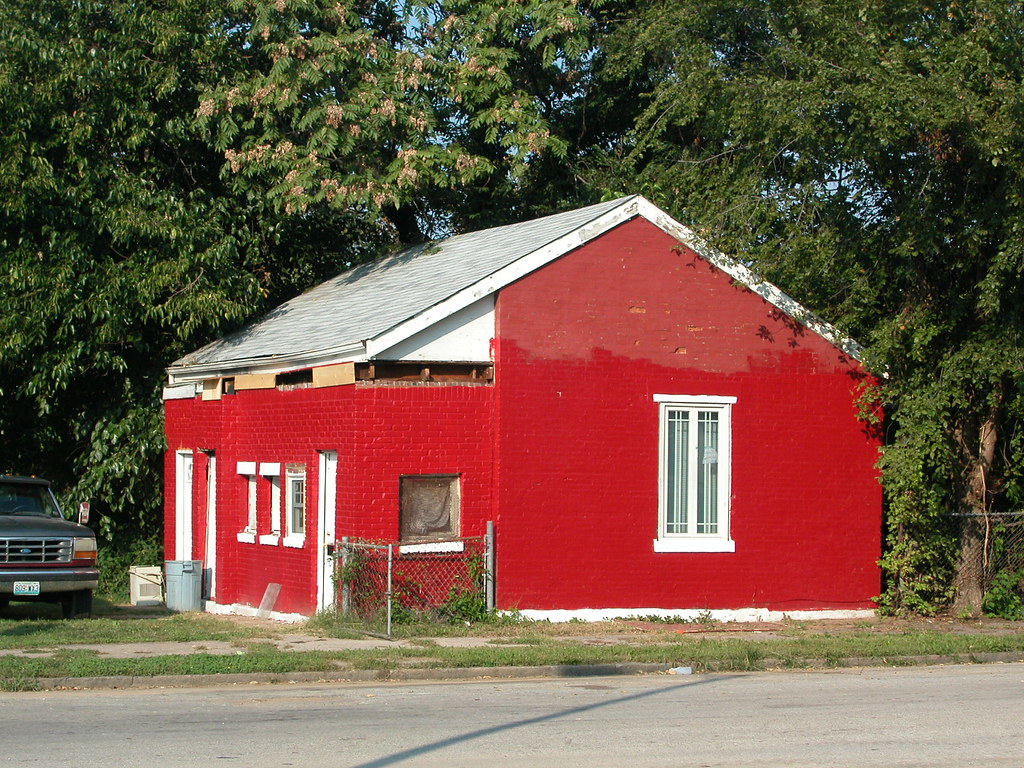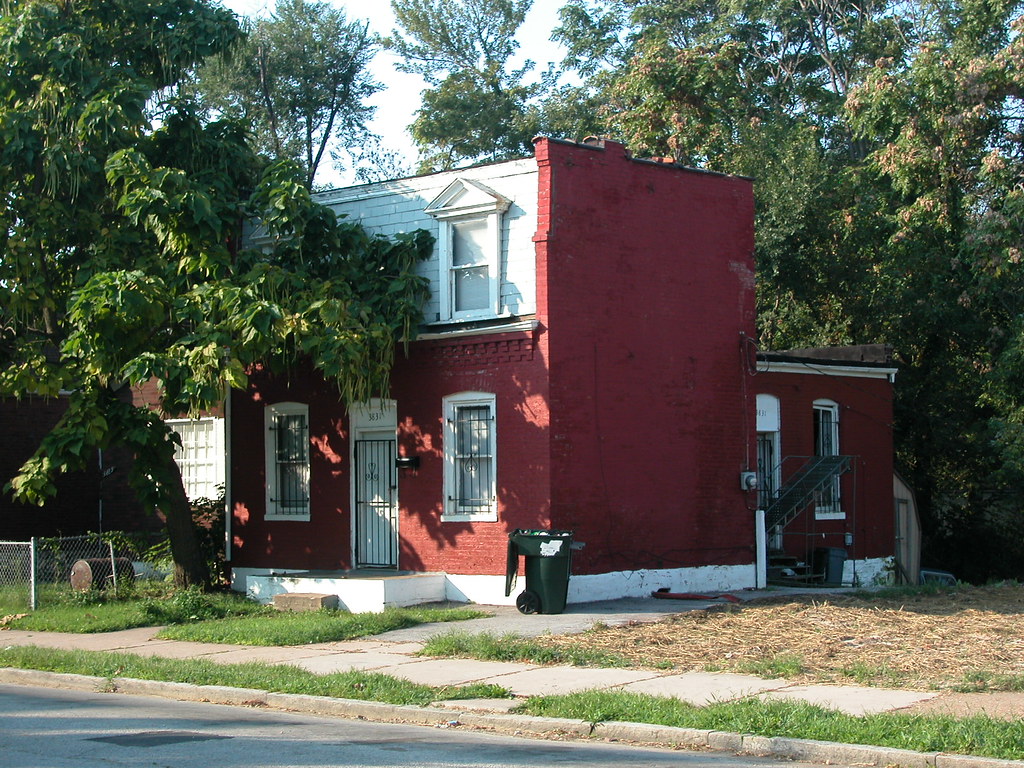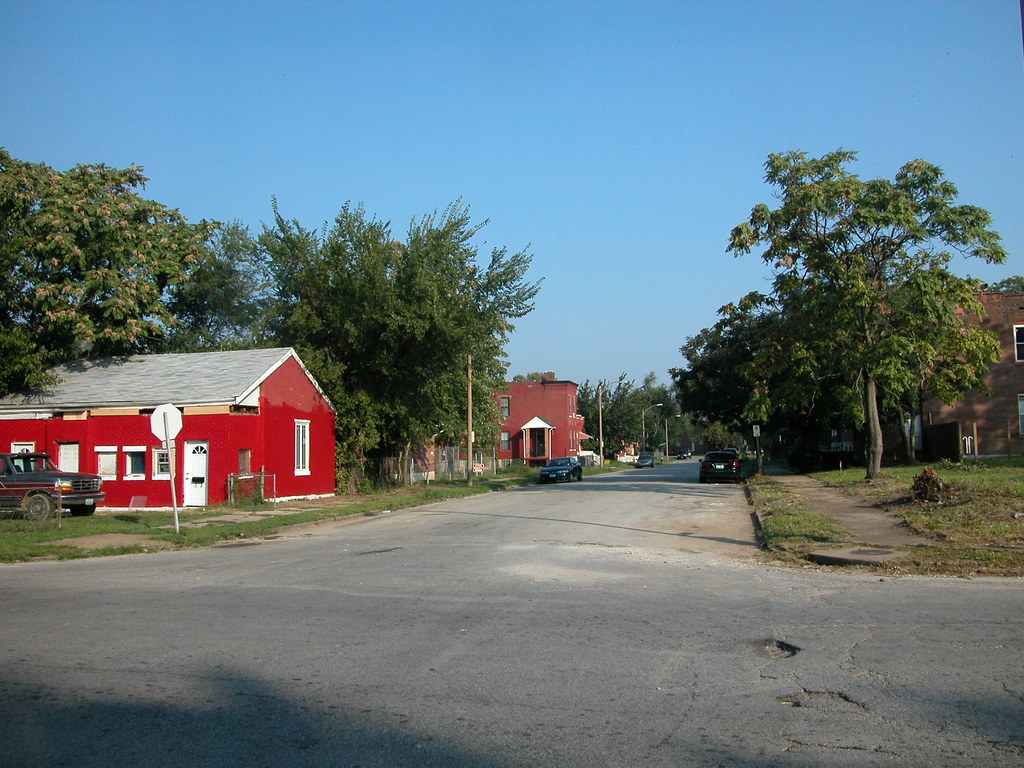 This house stands in Hyde Park on the west side of Vest Avenue just north of Bremen Avenue. Despite some obvious maintenance needs, the house is a treasure. This is one of the small houses that have a front-gabled salt box roof profile. I think of these houses as cousins to our city's flounder houses, whose roofs make a slope from one side to the other. The salt box variation has a roof profile common around the country, but the basic form and size of the house is akin to the small flounder houses that one still finds all over the city east of Grand Avenue.
This house stands in Hyde Park on the west side of Vest Avenue just north of Bremen Avenue. Despite some obvious maintenance needs, the house is a treasure. This is one of the small houses that have a front-gabled salt box roof profile. I think of these houses as cousins to our city's flounder houses, whose roofs make a slope from one side to the other. The salt box variation has a roof profile common around the country, but the basic form and size of the house is akin to the small flounder houses that one still finds all over the city east of Grand Avenue. On the next block of Vest to the south stands another small house. This one is of a different but common type, that of the two-story mansard-roofed home in which the mansard roof forms the second floor. These houses are more common than either the flounder or the saltbox, but typically are also small in size.
On the next block of Vest to the south stands another small house. This one is of a different but common type, that of the two-story mansard-roofed home in which the mansard roof forms the second floor. These houses are more common than either the flounder or the saltbox, but typically are also small in size.Taking the wide view of this block, we see two other small houses and some vacant lots. Some two-story houses are down the block and across the street.

Looking up to the next block north, we find vacant land and the one-story salt box house. Some two-story houses are down the block and across the street.

This west end of Hyde Park developed slowly in the 19th and early 20th centuries, and the results are neither as consistent or as dense as the eastern part of the neighborhood. The west end was far less desirable as a place to live due to the presence of the meat packing industry, which was centered on Florissant Avenue. The Krey's Packing plant and a few other packing-related buildings stand, but much of the rest is gone. The packing industry was largely lost to the National City Stockyards in Illinois by the early 20th century, so later residential development in western Hyde Park produced larger buildings. The early houses were modest in scale, many only one story tall. The residents worked nearby at the packing houses or the Hyde Park brewery.
The 1909 Sanborn fire insurance map shows over a dozen one-story houses on the two blocks of Vest Avenue profiled here. Less than six remain. The remaining small houses point to a residential economy lost to rising Gilded Age fortunes. Nowadays, in the wake of the McMansion glut and with the American economy on the brink of collapse, small houses do not seem so bad. Necessity led to construction of the small houses on Vest, and necessity may make them attractive 21st century housing options.
A new ballpark is proposed east of here on Florissant Avenue, and revitalization efforts around Bethlehem Lutheran Church and Irving School have changed this west end of the neighborhood into a livable place. New housing has gone up on 22nd and 25th streets, but the larger market-rate homes have limited demand. Perhaps an alternative market-rate infill project is in order on Vest Avenue. The vacant lots offer the opportunity to again build small houses there to create affordable, low-energy houses. Small houses already cost less to heat and cool, and are easier to make passive than larger homes. The size makes them more affordable, and also expandable. The first home shown above has an addition on its south side, and others shown on the Sanborn map have one or two rear additions. Such flexible, small houses are in short supply in St. Louis. Development of more needs to happen.





2 comments:
But you're not successful if you don't own a gigantic house! Only poor people live in small houses, and no one wants to look poor, do they?
Shaking the 1000 squ. ft house tree here, boss. I don't know if people will begin to move--literally as well as figuratively--away from large houses and McMansions, but I certainly believe that one, small houses are not, as some benighted twits have claimed, "functionally obsolete", and two, the trend toward 3000+ squ. ft. dwellings for the average family was unsustainable both economically and environmentally. I'm not convinced, however much it would benefit me as a City resident, that people will begin to return in droves to the City. And frankly, I'm getting a little pissed at residents with children who say "Oh, yeah, we're moving to St. Chuck when little Susy gets to be school age." Without even considering admitting their child to City schools. From most of the info I've received, the SLPS is not nearly as bad as anyone makes it out to be. It's a bit like GM: some great and reliable divisions and vehicles, and some which just aren't quite there yet. How the bloody hell are the City schools supposed to improve when there aren't enough middle-class parents to agitate for better governance, improved and renovated facilities (with enough $'s for maintainance), up-to-date materials and books, etc? Whoops, turned that into another rant. Meh.
Post a Comment